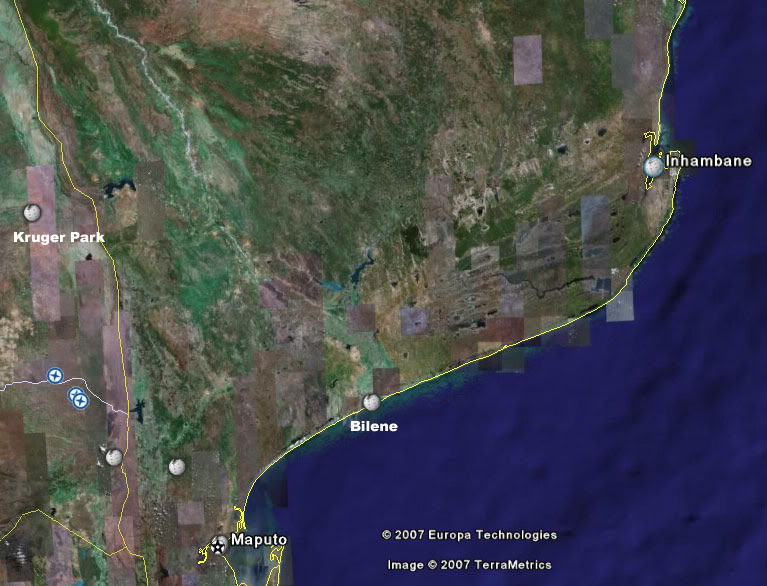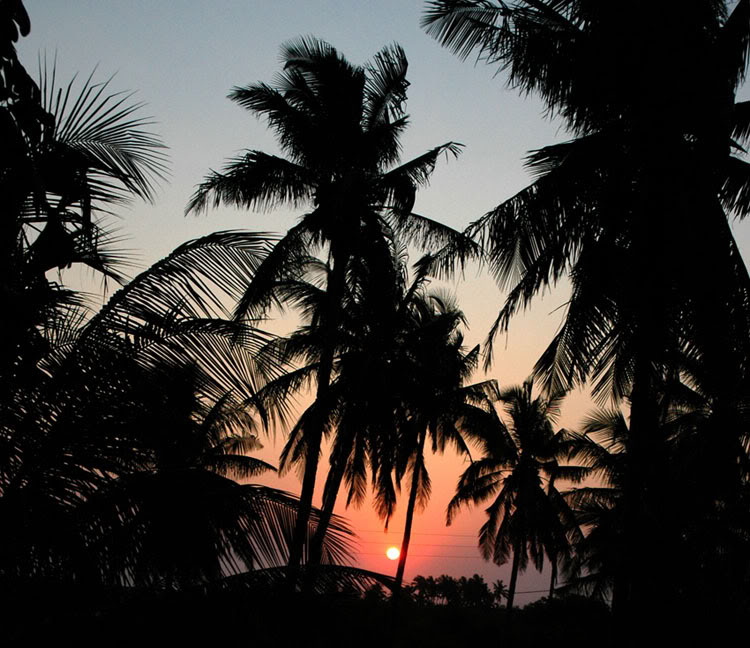
We had travelled from Maputo up to Praie de Sol where we stayed the night, we then continued north up the main, and possible only, sealed road. The country stretched ahead, quite flat, there are vast areas of highly fertile land built up by the run-off from the countries to the West. Also prone to massive flooding, as shown in 2000 when the Limpopo flooded and bisected the country.


Mozambique will jump straight past the copper telephone line era. There are cell towers in the middle of nowhere-and simple rent-a-phone booths everywhere. Some are flasher, but they are all making a great difference to life in a basic country.



There are markets all along the road, selling everything







There are few shops, but they are difficult to recognise ! In every village there were small road side businesses selling anything and everything you may need. Some only selling one or two things and a few more varied. [Most of these pictures are taken out a moving car window, I am uncomfortable taking pictures of people, it is not a zoo !]
Driving northward saw almost no-one over 50, and most people were under 25. This is an accurate picture of Mozambique population. The war years decimated the population 20 years ago, and the population has exploded since then.
Here are some notes we made while travelling “The road is occasionally okay, or bumpy from multiple patching, or potholes, or narrow with big drops at the tar edge. It takes a lot of concentration. Can only cruise at 80kph. Nearly all the people are young and when school comes out at midday they are everywhere. The locals do not use the old concrete shops that are derelict, but put up a grass stall alongside. After chatting to a local businessman that all land is owned by the government and you take out a lease, so you never own the improvements you make. In addition if you do make improvement, the cost of the lease increases. No win situation”
We crossed the great grey green greasy Limpopo River at Xai Xai



We drove through Inhambane, on the inside of a peninsula, facing Maxixe. The Arab influence becomes noticeable. The ubiquitous taxivans had been giving way to taxiutes by now.
We drove around to the seaward side of the peninsula to Barra Lodge near Tofo Beach





It had been inferred that this was a good place to stay. When we arrived we were quoted $AU 250 per unit (in 2004) then when we said no thanks, we will go down the road, the price dropped. We paid $140 for a cottage made of grass, no working fridge, unless the electricity came on, no fan because when the electricity did come one, it was too ‘week’ to run a fan. The mozzienets did not touch the ground and there was no hot water. Rather noisy and when the wind blew all the sand come inside. Now I am not being negative of the cottage, what I am being negative is the COST. Tourists do not like being ripped off.
As a beach location it was great and a pleasant place for a one night stay. Not bad, we’ve stayed in plenty worse… but not where the amenities were so bad and the price so high!
So, where were we..?? We had gone this far-

We stayed for a day at the Barra Lodge, where paradise bridge is marked. The dhow crossing from Maxixe to Inhambane is a very popular tourist trip.
The car survived in the wind, undented! The coconut palms in Moz are owned by families, no matter who owns the land. The ownership is passed down to the children.
In the morning we took a walk out along the paradise bridge- But the handrails soon disappeared, the walking timbers got more uneven and the gaps bigger, and nails vanished. Still, it was only a metre to fall! It led to a sand island in the mangroves, bordering on a channel behind the peninsula.




I was a stunning place, but we were not blessed with a hot sunny day- this was September.

Next – Barra Beach to Vilanculos